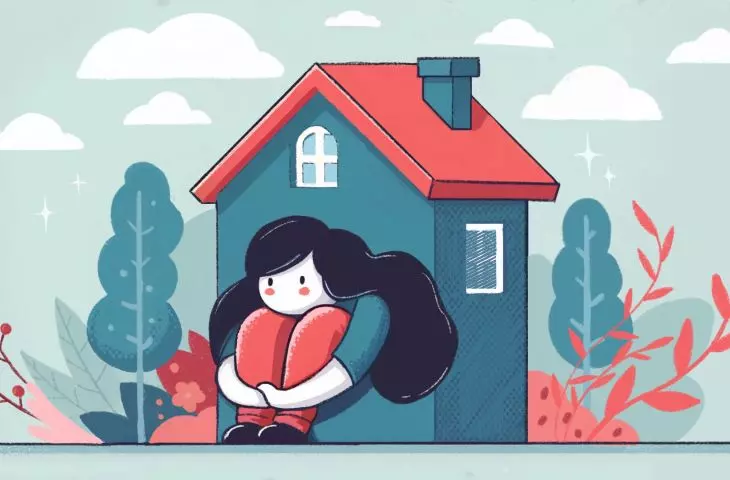"Tight, but own" - that might have been the headline of an ad that flashed me recently on one of the economic and business news portals. It would have been a more appropriate name. The advertiser, however, chose to refer to the 10 square meters as "tiny but lovely."
Indeed, our brains like small things and creatures. Hence, probably, the phenomenon of countless accounts on social networks with cute kittens and doggies or a whole series of notebooks, pens or purses and cute clothes. However, an apartment, sorry - a business premises (after all, an apartment by law starts at 25 square meters) we should not necessarily consider in the category of "cute".
View this post on Instagram
Young people have it tough in the housing market. Unless they've drawn an inheritance in the lottery of life or parents who can finance a place for them, they will most likely contract for thirty years, quite likely at a considerable distance from the city. Thus, they will subsidize a sufficiently large apartment with petrodollars spent on the commute. Alternatively, they will try to get a smaller M, in which it will simply be cramped. In terms of overcrowding, we are at the tail end of Europe. But there is no surprise here, by modern standards already a typical bachelor's apartment is an overcrowded dwelling. According to Eurostat, you need a separate room for sleeping and daytime activities[1]. Communist blocks from the 1960s at least tried to patch up the small square footage with a bedroom alcove. For the 10m2 of the micro-apartment mentioned, every square meter was certainly used, but it would take lessons from Hogwarts, not polytechnics, to carve out a night zone here.
substandard accepted
We live sub-standard and are used to it. Voices about the younger generation making it up, because after all, it used to be, and no one complained, there were eleven of us, we lived in a lake. So let's maybe look at prices - in June, for the average gross salary from the business sector, you could buy 0.97sqm in Zielona Gora and 0.93sqm in Gorzow Wielkopolski of real estate development[2]. It was these cities that had the most favorable price-to-earnings ratio. In Warsaw, sticking to the same ratio, one could purchase more than half a square meter. In our capital, a standard, average, working single could afford to mortgage a 23-square-meter apartment, while a 2+1 family could afford an intimidating 43 square meters. Of course, the situation is similar in other cities, bearing in mind the variation in terms of the attractiveness of job opportunities and the region of Poland.
I know that probably someone will be very eager to write a comment that in this case you need to work more, that there is nothing for free, that everyone is the smith of his own fate. I would probably agree if we were talking about being able to buy velvet bedding, the latest smartphone or a car. The problem is that we are talking about housing, something very basic. Young people don't want palaces, penthouse apartments at all. They want accessible dwellings where you can sleep without feeling like you have your head in the sink, where you can do laundry and hang it up without taking up 99% of the "apartment" space, and where pursuing any hobby other than scrolling on your phone is possible.
hidden data
Whether it's getting to ownership or renting (but the safe kind, not the kind that ends with moving three times a year) - indifferent. We simply want to have decent living conditions. Housing is one of the basic spaces needed to realize one's own needs. "Tight but own" wins in the market because it's the only thing young adults can afford. Of course, this reflects on the quality of life. I don't believe the slogans that say such a metric is tailored to the needs of the new generation. No - it is tailored to what they can afford. And they can afford very little. But the worst thing in all this is that even if dozens, hundreds or thousands more similar "tiny but lovely" units sell, not only will we grow a group of frustrated people, but we will permanently spoil our real estate fan base. Large apartments divided into clusters will stay with us, with an aging population that emigrates under the city, looking for a property that allows you to walk around the bed.
In conclusion - I would like to put up a screen in front of my house in the evening and show a movie to all those who design and invest in micro-apartments. I would play them the second episode of season 6 of "Kitchen Revolutions." Why? Because it's the one in which Magda Gessler says "Why are you poisoning people!".
Magdalena Milert
[1] https://ec.europa.eu/eurostat/statistics-explained/index.php?title=Glossary:Overcrowding_rate
[2] https://bigdata.rynekpierwotny.pl/newshub/informacje-rynkowe/w-jakich-miastach-jest-najwieksza-szansa-na-wlasne-mieszkanie-raport-dostepnosci-mieszkan-21529/














